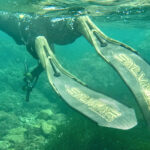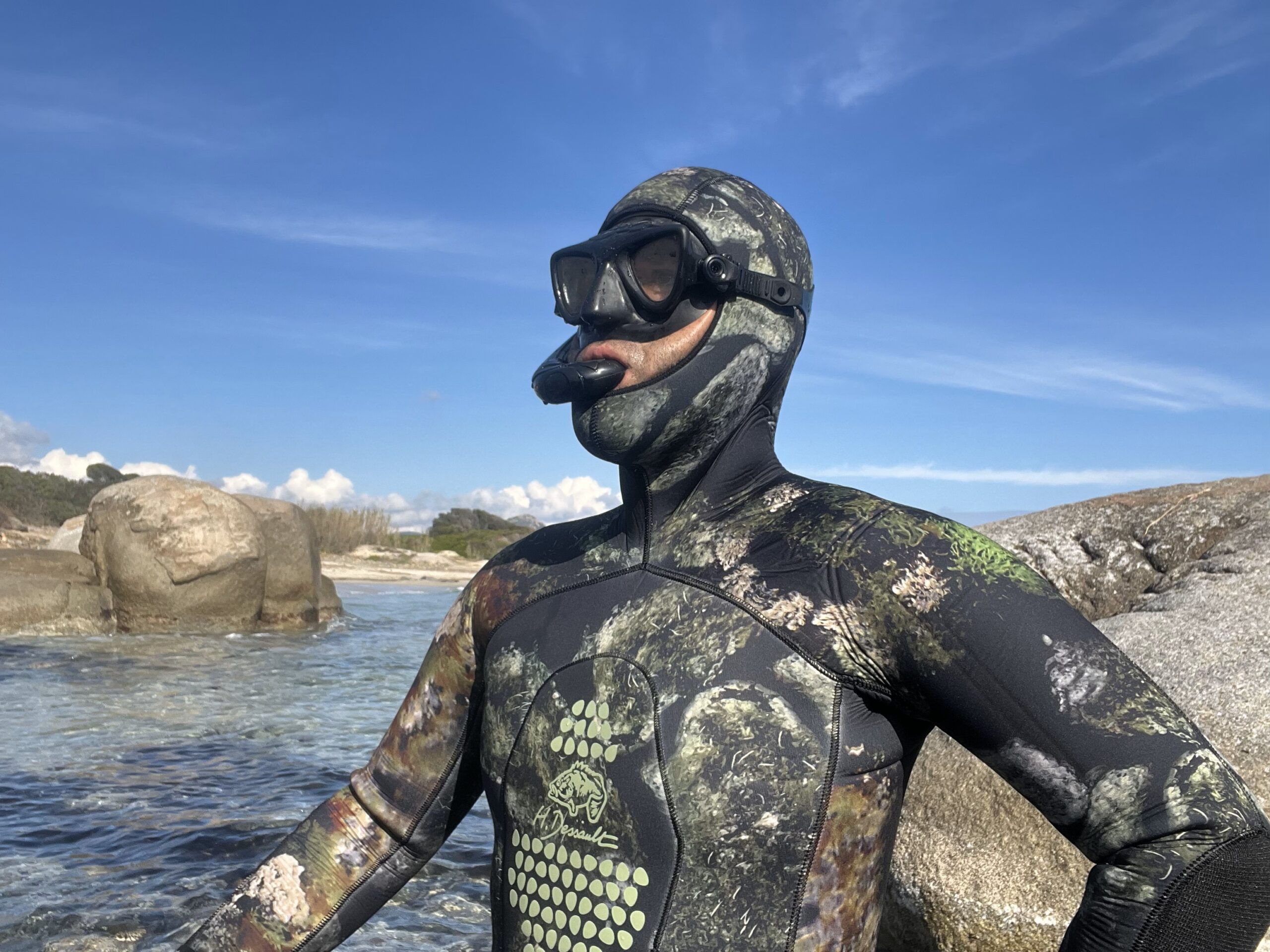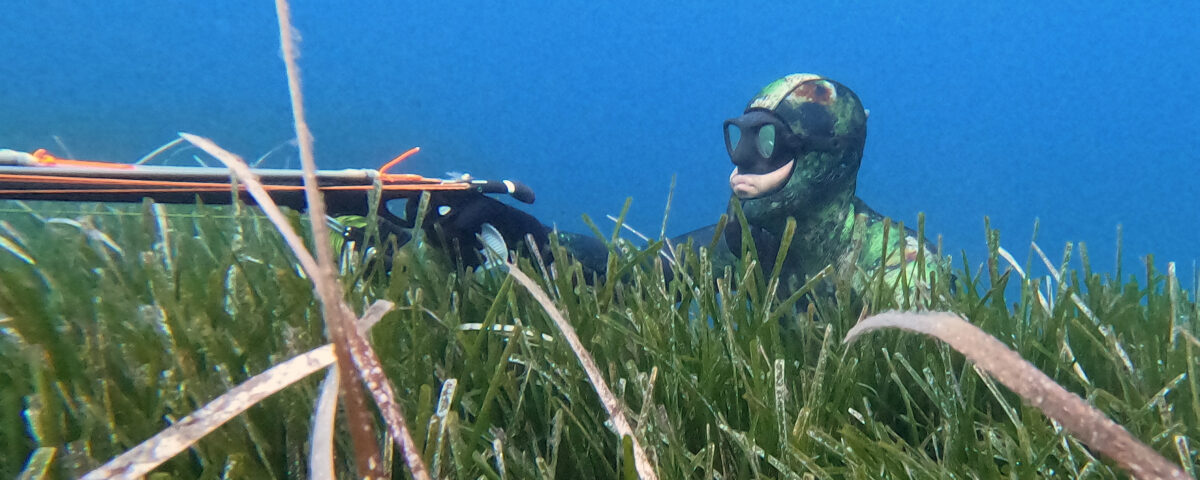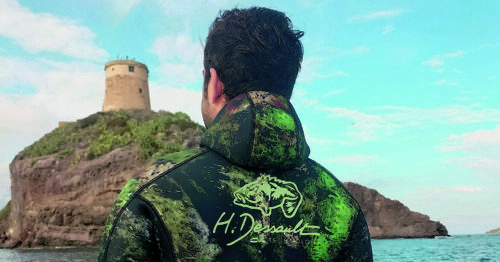H. Dessault: Merou Camu Wetsuit

Salvimar: Speeder Carbo HD Fins
11 April 2025
Donny Mac and His The Freedive Café
24 April 2025Open-cell inside and lined outside, it features a highly effective photographic camouflage. The sternum, elbows, and knees are well protected. We tested the 7mm version
Federico Rais
Over the past few months, the H. Dessault brand—now part of the C4 Carbon group—has transitioned from being a "historic" name to one of the most modern and innovative brands in the industry, thanks to a strong media campaign and a team of skilled athletes. But you don’t win over the market with social media reels and pretty pictures alone. In this regard, Dessault has proven to keep up with the times with great attention to image, although its real strength lies in the constant evolution and innovation of materials.
In just a few months, the catalog has tripled, adding fins, spearguns, accessories, and now wetsuits—like the one we tested this month: the Merou Camu.
Unboxing and Sea Trial
The version I'm currently using is, of course, a 7mm, size 3 in my case, as I’m 1.78m tall and weigh around 78 kg. This model features open-cell neoprene on the inside and a camo fabric lining on the outside. The 3D photographic camouflage, exclusive to H. Dessault, replicates a typical Mediterranean seabed with plenty of Posidonia seagrass and alternating images of granite and rock. The camouflage pattern is often interrupted by black patches to further break up the diver’s silhouette and blend seamlessly into the surroundings.
The jacket includes a sternum reinforcement and abrasion-resistant protection on the elbows. The pants have abrasion-resistant reinforcement at the knees—very useful during winter, when even the most seasoned spearos leave deeper waters for the shallows, especially when the sea is rough or just calming down. And it’s well known that when working close to shore, you need good camouflage but, above all, tough gear that won’t wear out after just a few dives.
That’s not all. Calm, sunny winter days are becoming more common, and during these times, you're often forced to go for deeper, more demanding dives to find fish holed up in crevices. That’s where the resilience of such a soft material matters—and the Merou Camu surprised me with its excellent elasticity recovery.
Another noteworthy feature is that the neoprene is TÜV certified, ensuring it’s free from substances harmful to humans and the environment.
Moreover, the cut of both pants and jacket is pre-shaped and highly anatomical. The reduced number of panels used in its construction results in fewer seams, which enhances comfort and flexibility, particularly in the armpit area—preventing the chafing that can occur with thicker suits during prolonged use.
Ratings
Design Even though I’m not a camouflage fanatic, I must admit the 3D photographic camo from Dessault is really well done! It perfectly matches the environments I usually dive in, made up of Posidonia and granite. 9
Materials The neoprene is incredibly soft and allows for easy movement despite being 7mm thick. Even during deeper dives, it retains great thermal properties and the compression is minimal. 8
Comfort Maybe I got lucky, but this wetsuit fits like a glove—almost as if it were custom-made. The five available sizes make it easy to find the perfect fit. 9
Value for Money I’d say the price is in line with the market. However, the quality and workmanship are definitely top-notch. 9
Sternal Reinforcement
It’s larger than what you typically find on most wetsuits. This protection extends from the chest to the stomach, allowing you to load long spearguns safely. It maintains the same color scheme as the wetsuit, with the brand logo in light green that doesn’t compromise the camouflage.
Camouflage
The alternating photographic graphics of Posidonia, rocks, and black patches allow this wetsuit to blend into virtually any Mediterranean seabed.
Reinforcements
Reinforcements are applied to the pants from the knee to the ankle, and on the sleeves from elbow to wrist—making the wetsuit practically indestructible.




